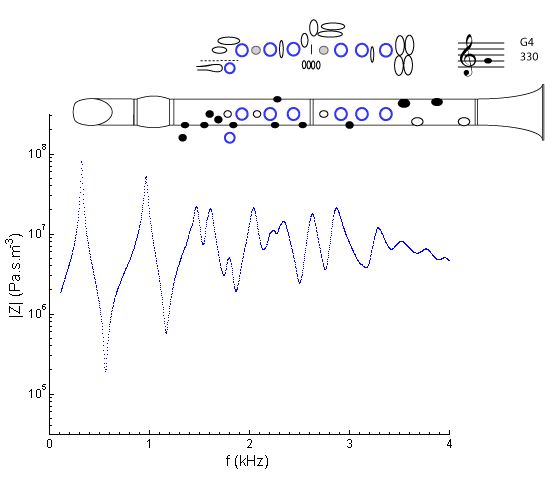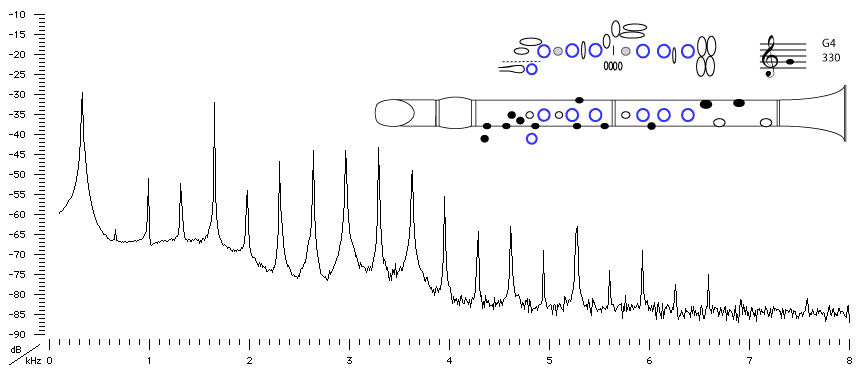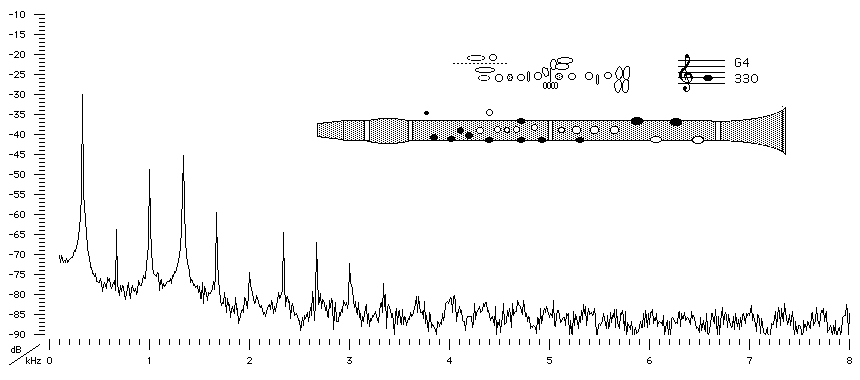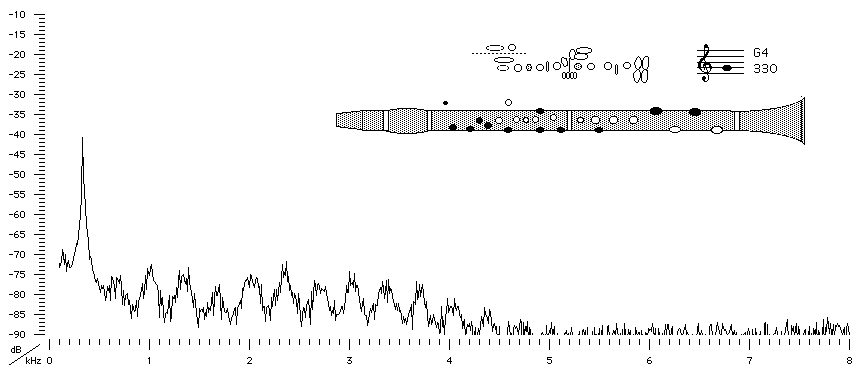| Acoustics of the clarinet |
A clarinet |
G4 |

|
Fingering Acoustic schematic Non-specialist introduction
to acoustic impedance Notes are the written pitch. |

Sound spectrum
of an A clarinet
played using fingering
for G4 forte .
For more explanation, see Introduction
to clarinet acoustics
![]()
![]() You can hear G4 forte
played on an A clarinet.
You can hear G4 forte
played on an A clarinet.
For this note (and also for E3 and A6), we show spectra for different loudness or dynamic levels (f, mp and pp). Note that, as the player blows harder, the level of the fundamental actually becomes weaker. The main cause of a clarinet's note being louder is that more high harmonics appear and that the high harmonics already present become stronger. These extra and stronger harmonics change the timbre of the sound, making it brighter or less mellow: listen to the sound files. They are also very effective at making it louder, because our ears are most sensitive in the range 1-4 kHz. (See What is a decibel?) Note also that the base line for all spectra is a broad band 'noise' containing all frequencies. This is due to the turbulence of air passing through the reed opening, and it is an important part of the characteristic clarinet sound, particularly at the beginning of a note.
For a discussion of how the reed motion produces different timbre and dynamic levels, see Playing softly and loudly.

Sound spectrum of an A clarinet played using fingering for G4 mezzopiano.
![]()
![]() You can hear G4 mezzopiano played on an A clarinet.
You can hear G4 mezzopiano played on an A clarinet.

Sound spectrum of an A clarinet played using fingering for G4 pianissimo.
For more explanation, see Introduction to clarinet acoustics
![]()
![]() You can hear G4 pianissimo played on an A clarinet.
You can hear G4 pianissimo played on an A clarinet.
|
Contact:
Joe Wolfe
/ J.Wolfe@unsw.edu.au |